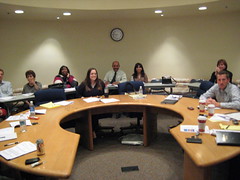Is the person in charge of social media at your company also knowledgeable and in charge of your email marketing? Or, better asked, is all of your marketing integrated.
Despite calls that “e-mail is dead” because social media has taken the place of e-mail, that gets the process backwards — choose goals and strategy prior to choosing the technology or technologies to implement.
Email is social. Email is also very strongly integrated with social networks. Social media also integrates with email.
If you want fans to your Facebook page, you don’t simply create an offer and let it sit there. Frequently, one of the most effective tactics is to send an email to your list, informing them of the offer on Facebook. This serves the dual purpose of lead nurturing and also empowering your strongest advocates — those that chose to receive your email (it is opt-in only, right?) — to help promote yourself.
According to ClickZ:
E-mail should be working hand in hand with the other digital messaging channels and each channel should complement and leverage the strength of the other. Ask yourself:
- Are you talking to your best advocates (e-mail list) and pushing them to your Facebook page where they can amplify the conversation in your favor?
- Are you following up on conversations happening on Twitter and sending your followers the more detailed information, or coupon, or content they want?
You can also tweet your e-mail newsletter, like Smashing Magazine recently did.
According to ClickZ,
E-mail marketers need to get in this mindset – it’s not either/or; it’s not one killing the other; it’s two different channels that are very much the same.
This is why every facet of the campaign needs to be integrated; marketers need to start looking at holistic messaging strategies. Does your community manager have a schedule of when content will be pushed to Twitter and Facebook so that those two channels are complementing each other? Is e-mail on that same calendar? I’m not just talking about someone, somewhere in your organization who has a master marketing calendar. I mean, is all of your digital messaging working together in real-time? E-mail is just another one of your social channels, and it could be argued that the people who subscribe to that list are your best customers.






